Digital
Sophie French Sites at the Edge of the World
-
Tauira / Student
Sophie French -
Kaiako / Lecturer
Andrew Burrell
-
School
University of Technology Sydney
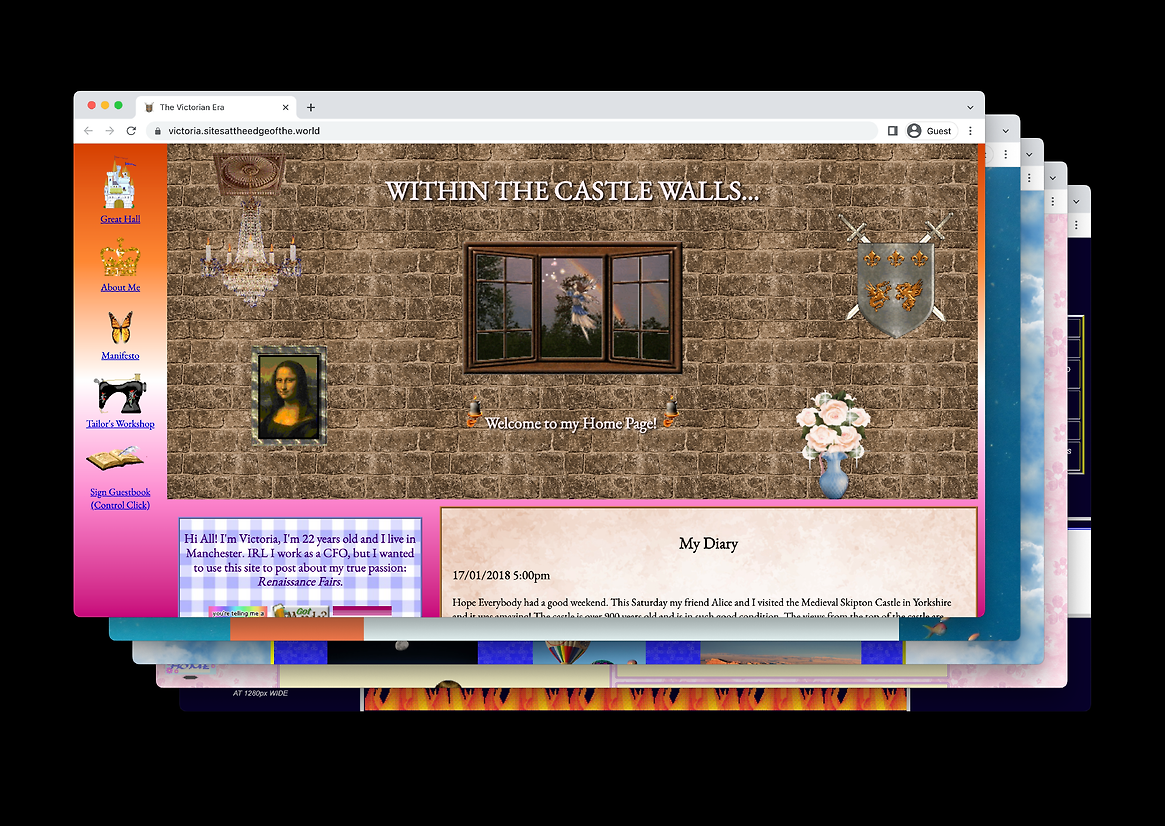
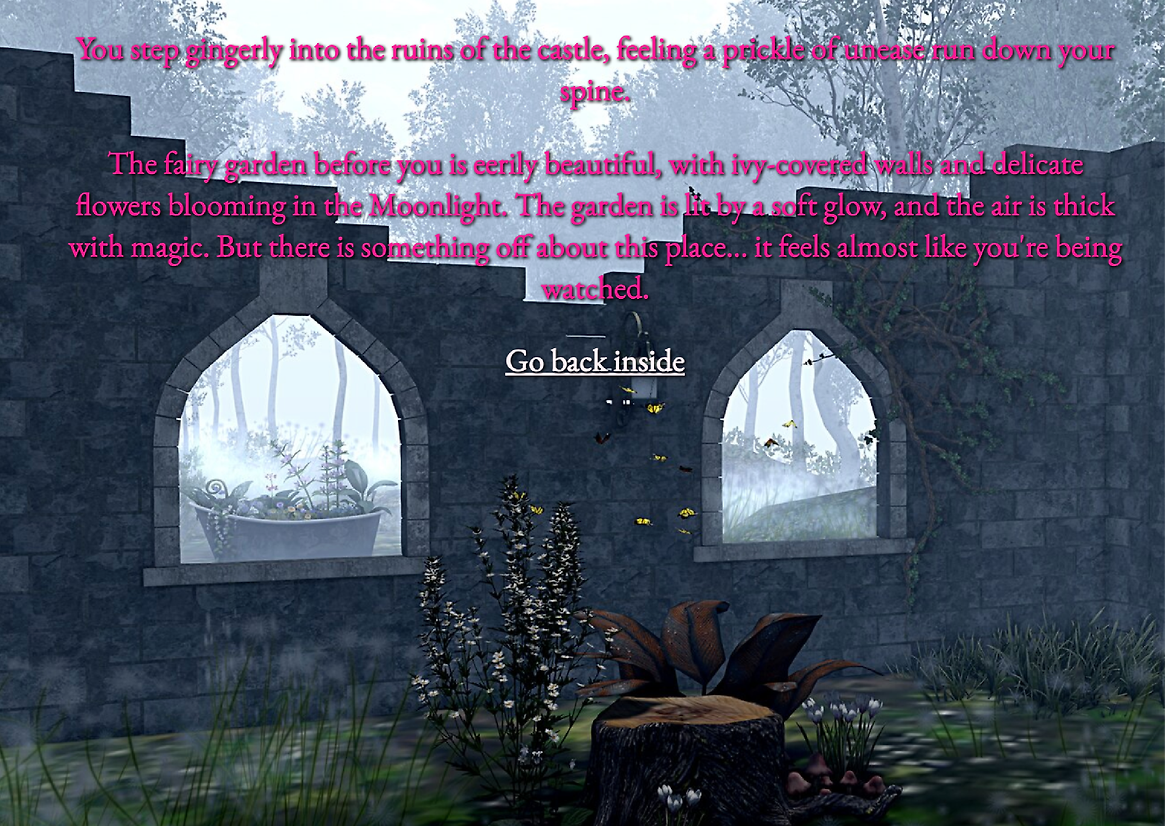
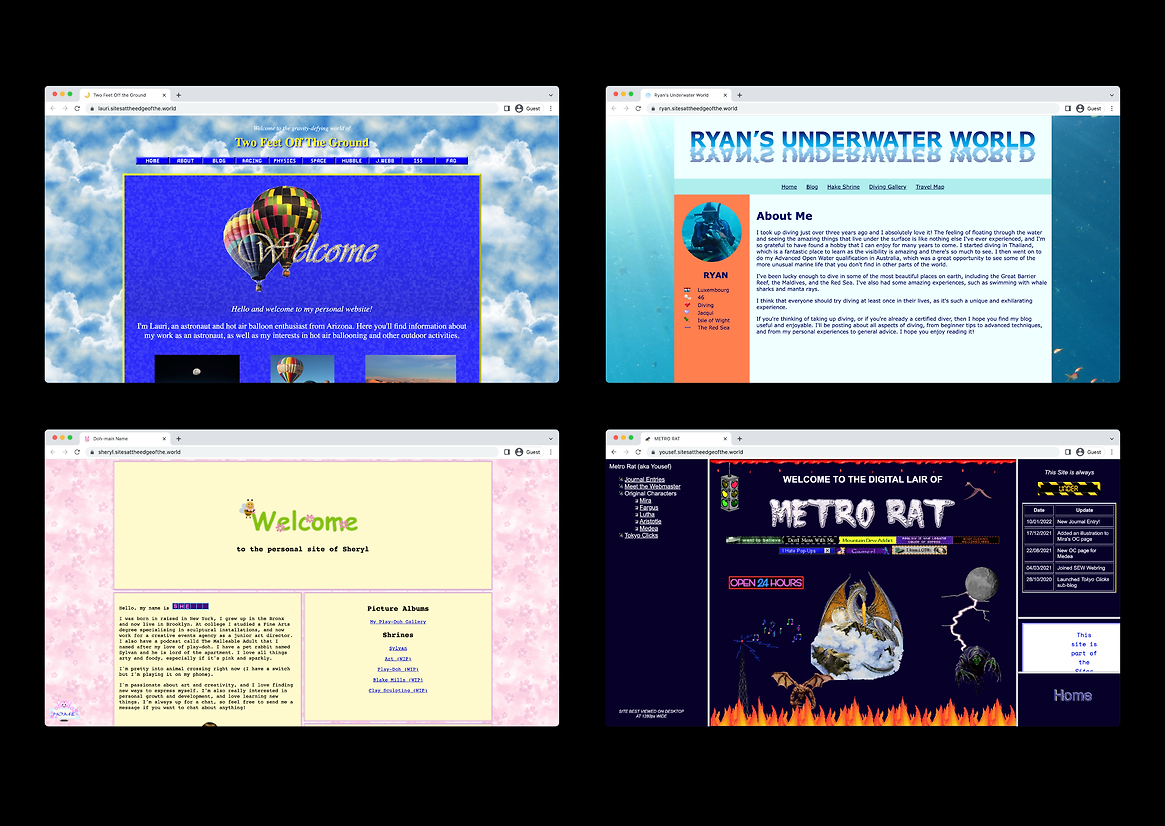
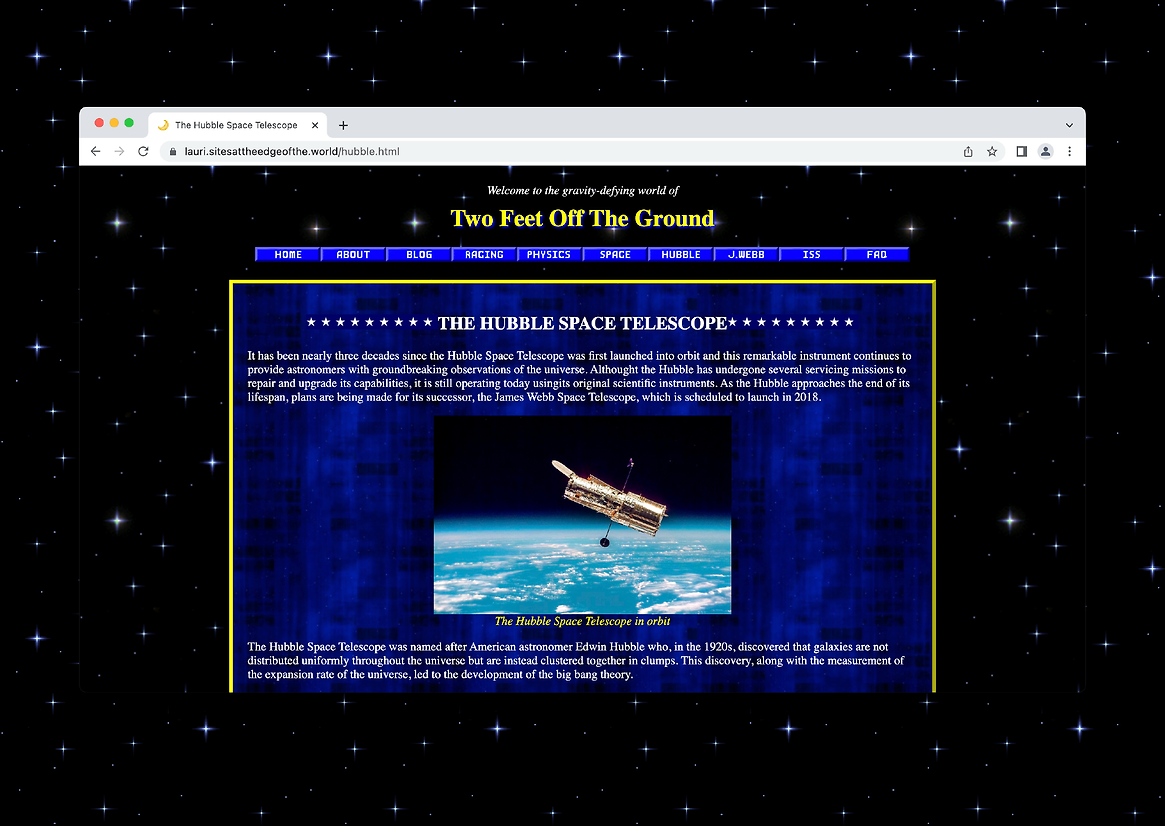
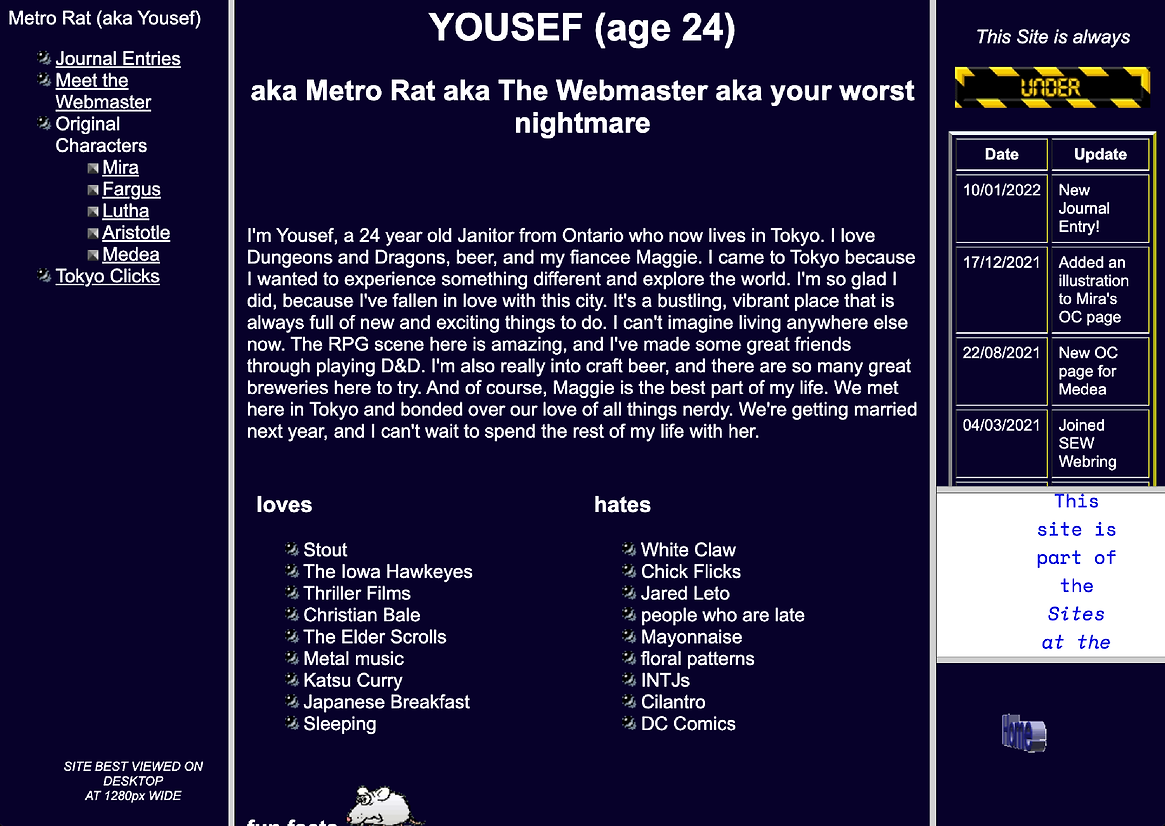
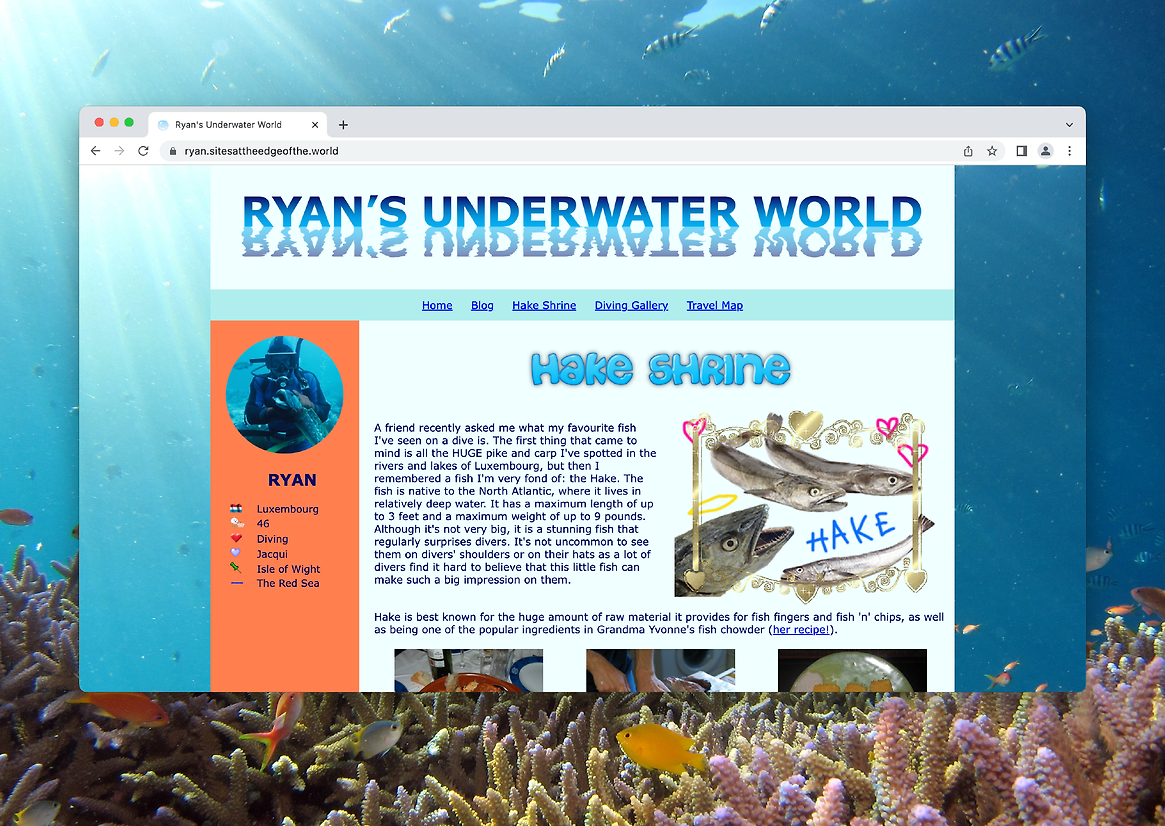
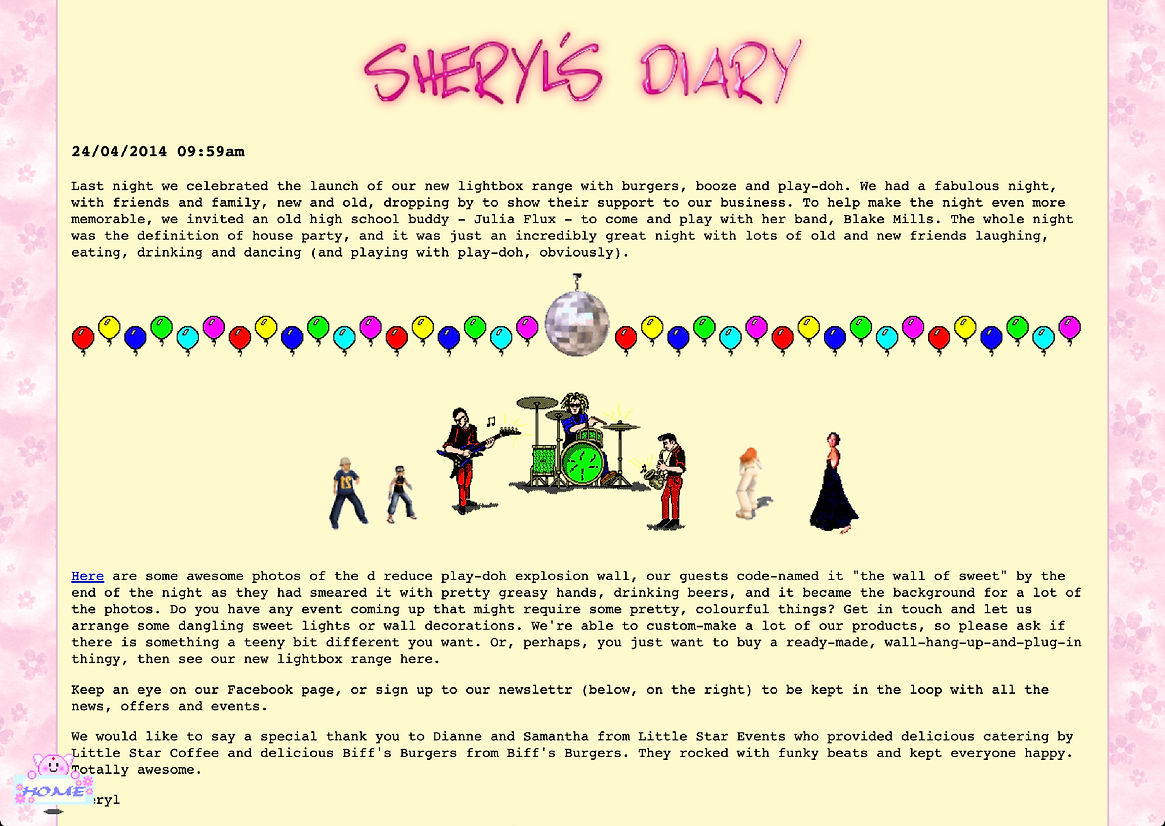
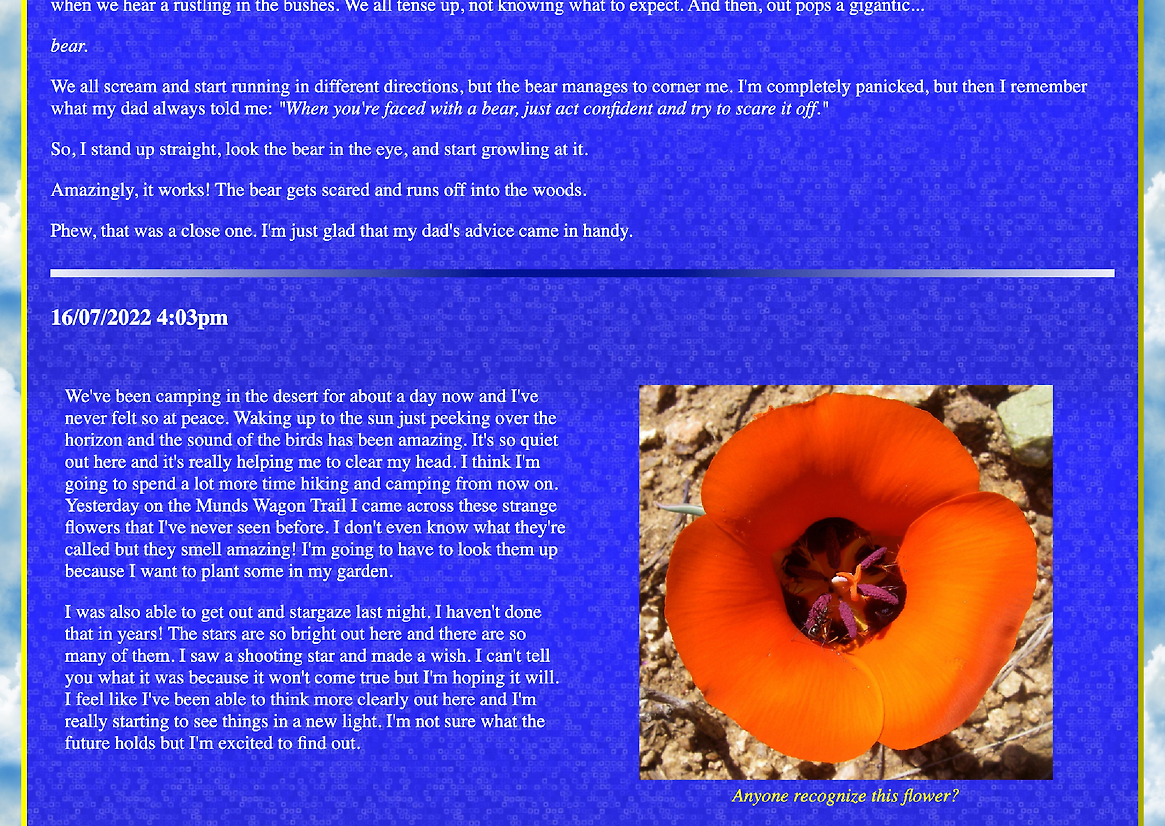
Description:
The web of the late 90s was a garish cornucopia of flashing gifs and glittery word art. Users from across the world were carving out personalised corners of the internet, hand-coding websites that were provisional and one-of-a-kind. Sites at the Edge of the World uses this gaudy visual language to challenge expectations about the way we construct identity online. An interactive investigation into storytelling and world-building, the work is comprised of the personal websites of five Speculative Identities – ‘characters’ developed using generative code and machine learning algorithms.
The identities that emerged from the iterative world-building process – An Astronaut, a diver from Luxembourg, a DnD obsessed Janitor, a CFO/Renaissance-buff, and a play-doh loving podcaster – became three-dimensional entities through blogs, shrines, and ‘about me’ pages written by OpenAI's GPT-3. Each website is imbued with the unique visual perspective of its ‘owner’. The approachable curves of Comic Sans paired with an underwater background for the diver, the scratchy serifs of Garamond with an aged paper texture for the history buff. I also included nods to the identity markers introduced by the AI, whether it be a Lesbian flag gradient or a curation of digital ‘badges’.
Created before the release of ChatGPT, the project takes on new life amidst the uncertainty Designers face around the role of AI in creative practice. At first glance a Black Mirror-esque speculative future, Sites at the Edge of the World is a poetic exploration of what it means to perform identity in online spaces and an examination of ‘alternate presents’ as a nascent approach to Speculative Design. The work is not warning of a future where AI performs its own identity, nor is it advocating for a web free from the commodification of personhood. Instead it applies new ideologies to contemporary technologies to investigate an ‘almost now’, a reality so close to our own that it could be achieved with the right motivation and two semesters worth of coding practice. The work is uncanny because we see ourselves in it, but something’s not quite right – something we often can’t immediately pinpoint.
There’s often a cognitive dissonance when reading first-person stories written by AI. Audiences respond with genuine emotion before berating themselves for being ‘fooled’ by the ‘un-real’. However Artificial Intelligence is neither Artificial nor Intelligent, it is a set of taught behaviours. The GPT-3 model was trained on the internet, so when it produces a paragraph it isn’t coming up with a sentient thought, but copying the behaviours of the billions of people who have commented, reviewed, or posted online. In this way the work holds up a mirror to how we exist online, which makes its beauty (when, for example, Ryan describes proposing to his fiancee) and its horrors (when he goes on to recount facing death in a cave-diving accident) all the more significant.
Judge's comments:
We delighted in experiencing the personas developed and presented through late 90s website design. It perfectly nailed the feeling of that era, without feeling forced or overdesigned.
A fantastic juxtaposition of new and emerging technology, combined with old school look and feel. The most personality we’ve seen from A.I. yet.